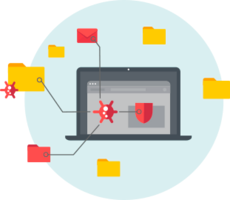What is a (digital) Trojan horse?
Similar to the Trojan Horse known from ancient Greco-Roman tales, this type of malicious software uses disguise or misdirection to hide its true function. After reaching the targeted machine, it often employs various techniques to be executed by the user or by other software on the affected system.
Trojans are currently the most common malware category, used to open backdoors, take control of the affected device, exfiltrate user data and send it to the attacker, download and run other malicious software on the affected system as well as for many other nefarious goals.

Brief history
The name “Trojan horse” is derived from the classical antiquity tale referring to the successful conquest of the city of Troy by the Greeks. To get through the city’s defenses, the conquerors built a massive wooden horse and hid a group of their elite soldiers within. After tricking the Trojan guards into pulling the “gift” into their fortified city, the attackers waited for nightfall, spilled out of the figure and overpowered the surprised defenders.
The first time this term was used in reference to malicious code was in a 1974 US Air Force report that focused on the analysis of vulnerabilities in computer systems. However, the term first became popular in the 1980s, especially after Ken Thompson’s lecture at the ACM Turing Awards 1983 reception.
Well-known examples
One of the first Trojans to become widely known was also the first ransomware seen in the wild – the “AIDS Trojan of 1989”. This malicious code was distributed via postal mail on floppy disks that purported to contain an interactive database associated with the disease AIDS. If installed, the program waited 90 boot cycles and then ciphered most of the filenames in the root directory of the machine. The “licensing agreement” of the software demanded that the victims send $189 or $378 to a post office box in Panama to get their data back.
Read more

How to stay protected?
The umbrella term Trojan includes various types of malicious software and can thus be avoided only through a combination of good cyber-hygiene and use of a reliable security solution.
Many Trojans exploit vulnerabilities in victims’ systems in order to infiltrate them. To mitigate these vulnerabilities, users are advised to update and patch regularly – not only their operating system, but all the software they use.
Read more
ESET offers you an award-winning security
ESET HOME Security Premium
owerful, multilayered protection to encrypt sensitive data, manage passwords easily, secure online transactions and more. A user-friendly solution for enhanced privacy online. Secures Windows, macOS, Android, and iOS devices.




